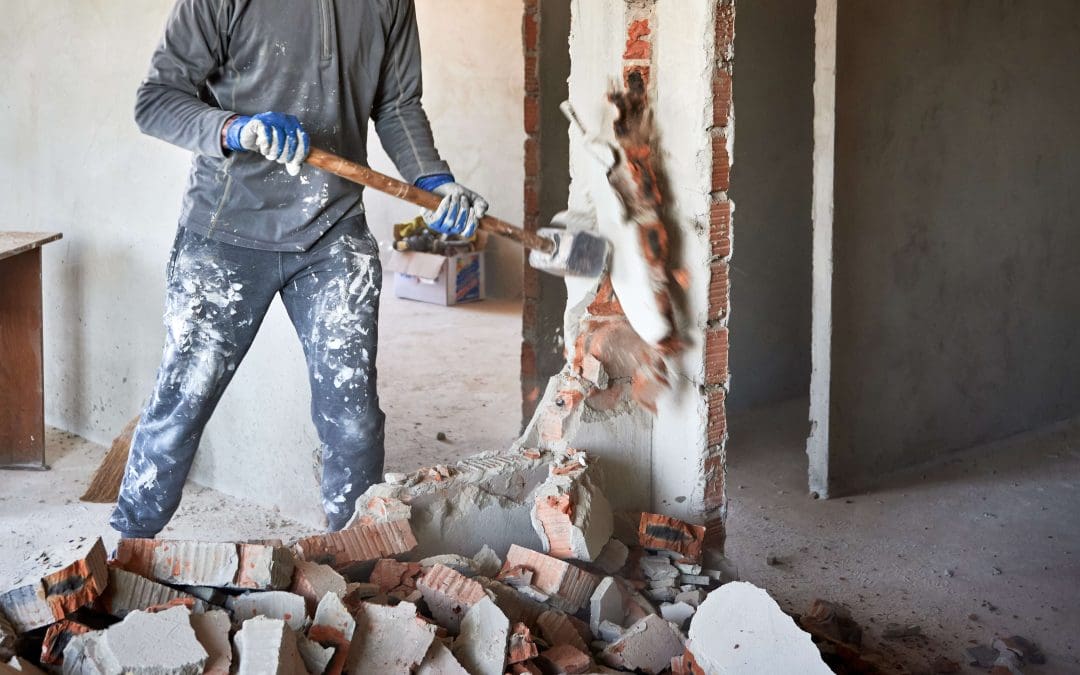Planning a home renovation and considering tackling the demolition work yourself? While it may seem like swinging a sledgehammer and tearing down walls is the fun part of a renovation, there’s much more to DIY demolition than meets the eye. Demolition work should be approached with proper planning, safety measures, and the right techniques. When done correctly, DIY demolition will save you money and set a solid foundation for the rest of your renovation project. In this guide, we’ll provide DIY demolition tips for a successful renovation to help you approach the task safely and efficiently.
DIY Demolition Tips: Plan Ahead and Know What to Demolish
The first step is to thoroughly plan the demolition process. Identify exactly what needs to be removed, whether it’s a non-load-bearing wall, cabinets, or old flooring. Knowing which areas are safe to demolish is critical because you don’t want to accidentally damage load-bearing walls, plumbing, or electrical wiring. Take the time to review your renovation plans, and if needed, consult with a contractor or structural engineer to confirm what can be demolished without compromising the integrity of your home.
Gather the Right Tools and Safety Gear
The right tools make demolition work easier and safer. Depending on what you’re demolishing, you’ll need crowbars, hammers, sledgehammers, pry bars, and utility knives. If you’re removing flooring or tiles, a floor scraper will come in handy. For walls, you may also need a reciprocating saw or a drill for tougher materials.
Equally important is safety gear. Demolition can expose you to dust, debris, and potentially hazardous materials. Always wear protective eyewear, thick gloves, a dust mask or respirator, and steel-toed boots. If you’re dealing with older materials, asbestos or lead paint may be present, which requires additional precautions like specialized masks and protective clothing.
Shut Off Utilities Before Starting
One of the most critical safety steps in demolition is confirming that all utilities—electricity, water, and gas—are turned off in the areas where you’ll be working. Accidentally cutting into live electrical wiring or plumbing can lead to dangerous and expensive problems. If you’re unsure how to shut off these utilities safely, call a professional electrician or plumber to assist with this part of the project.
Take It Slow to Avoid Damage
While demolition may seem like a task that’s all about brute force, it requires a careful and deliberate approach. Rather than rushing through the process, take your time to remove materials carefully. This will help you avoid damaging areas of the home that you want to preserve. For example, when removing cabinets, unscrew them from the wall instead of smashing them out. This method allows you to avoid unnecessary damage to the drywall.
When working with drywall, cut around the area you’re demolishing so that you don’t pull down more than you intend. It’s easier to patch a small hole than replace a large section.
Dispose of Debris Properly
Demolition generates a lot of waste, from drywall and wood to tile and old appliances. Have a plan for debris removal before you begin. Renting a dumpster is a good option for larger projects. If you’re removing hazardous materials like asbestos, you’ll need to hire a specialized service to handle the disposal. Recycle any materials you can. Many scrap yards accept metals, and some donation centers will take reusable fixtures or cabinets.
These tips will give you a confident approach to your DIY demolition project so that your renovation is a success.
DIY Demolition Tips FAQs
What should I do if I encounter asbestos or lead paint?
If your home was built before the 1980s, asbestos or lead paint may be present. In these cases, stop the demolition immediately and call a professional to test the materials. Specialized removal services are required to handle these hazardous substances.
How do I know if there are pipes or wires behind a wall?
The best way to locate pipes or wires is to use a stud finder with a built-in live wire detector. If your home’s original blueprints are available, you can also review them. If you’re still uncertain, consult a contractor or electrician before proceeding.
Do I need a permit for DIY demolition?
It depends on your location and the scope of your project. Minor demolitions like removing cabinets may not require a permit, but larger-scale work, especially if it involves structural changes, likely will. Check with your local building authority to verify that you comply with the necessary regulations.
Reveal360 Inspection Services provides home inspection services and radon testing to Northern Colorado. Contact us to schedule our services.

